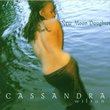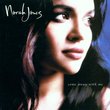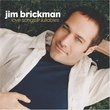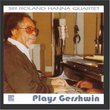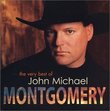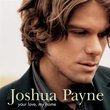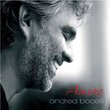| All Artists: Gaetano Donizetti, Emmanuel Chabrier, Leo Delibes, Charles Gounod, George Frideric Handel, Leonard Bernstein, Jules Massenet, Giacomo Meyerbeer, Thelonious Monk, Natalie Dessay Title: Natalie Dessay - The Miracle of the Voice [best of] Members Wishing: 0 Total Copies: 0 Label: Virgin Classics Original Release Date: 1/1/2007 Re-Release Date: 1/16/2007 Album Type: Enhanced Genres: Pop, Soundtracks, Classical Styles: Vocal Pop, Opera & Classical Vocal, Ballets & Dances, Waltzes, Historical Periods, Baroque (c.1600-1750), Classical (c.1770-1830), Modern, 20th, & 21st Century Number of Discs: 2 SwapaCD Credits: 2 UPC: 094636333229 |
Search - Gaetano Donizetti, Emmanuel Chabrier, Leo Delibes :: Natalie Dessay - The Miracle of the Voice [best of]
![Natalie Dessay - The Miracle of the Voice [best of]](https://nationalbookswap.com/cd//l/91/8591/6148591.jpg) | Gaetano Donizetti, Emmanuel Chabrier, Leo Delibes Natalie Dessay - The Miracle of the Voice [best of] Genres: Pop, Soundtracks, Classical
|
Larger Image |
CD DetailsSimilar CDsSimilarly Requested CDs
|
CD ReviewsWonderful introduction to "The Art of Dessay" Steven A. Peterson | Hershey, PA (Born in Kewanee, IL) | 01/21/2007 (5 out of 5 stars) "Natalie Dessay's "The Miracle of the Voice" is a welcome addition to the recording oeuvre. She covers much territory in this 2 CD work--from Offenbach to Donizetti to Gounod to Delibes to Massenet to Stravinsky and Bernstein (Candide). I'll mention sample selections below, rather than going through each one separately. She shows the ability to do well in the bel canto repertoire, featuring an agile, light voice that can get to the high notes and master coloratura techniques (trills and so on). In "The Bell Song" from Delibes "Lakme," her clear voice handles this work well. Fleming and Sutherland have darker voices; Dessay's is quite a bit lighter, more typical of what we think of as a coloratura voice (even though coloratura singing is manifest from basses to sopranos). She demonstrates nice trills and an ability to hit high notes accurately. In "Olympia's Song" from Offenbach's "Les Contes d'Hoffman," she captures nicely the "mechanical" voice of her character. Once more, nice trills and agility with the notes. Of course, the "Mad Scene" from Donizetti's "Lucia di Lammermoor" (here, sung in French) is prime coloratura territory. Dessay essays this nicely. In the slower earlier parts of this long scene, she shows a certain pathos, appropriate for a young woman who has gone mad over love and betrayal. When she gets to what in Italian would be "Spargi d'amaro pianto," she does well. Again, she exemplifies agile vocal technique. The second time through, she displays nice ornamentation. Given that she can trill well, it is somewhat surprising that this technique is not deployed better and more often. Nonetheless, well done. From Mozart's "Die Zauberflote," Dessay takes on The Queen of the Night's "Der Holle Rache." Again, well done. She hits the high notes easily and without strain (not something that all sopranos can say). And now for something completely different. . . . Johann Strauss' "Fruhlingsstimmenwalzer." A delightful romp. A Strauss waltz. Nice vocal technique. One wonders if Dessay could not have made this more "fun," since it is a waltz. Nonetheless, this is an easy and pleasant "listen." I once heard (is my memory correct on the name?) Theresa Stich-Randall sing this, and the effect was similar. Stravinsky's "Song of the Nightingale" from "Le Rossignol" is another change of pace. Nessay shows the range of her repertoire with this piece. Thelonius Monk's "'Round Midnight" was adopted for the French language here, with Claude Nougaro joining Dessay on vocals. Another interesting departure from the earlier operatic sound--an engaging piece. Her operatic skills do not overwhelm this song or work against Nougaro's voice. Finally, Leonard Bernstein's "Glitter and Be Gay" from "Candide." This is a credible effort at somewhat lighter music, while she still exhibits the vocal skills that she has. This is the first CD from Dessay that I have listened to. It won't be the last. A remarkable range of singing, done well across a variety of genres. This is a good introduction to the art of Dessay for those who have not heard her before. " One of Two Versions Eduardo Sanchez | Saint Marys, GA USA | 01/30/2007 (5 out of 5 stars) "This excellent 2-disc version has 18 tracks. Another version, containing 26 tracks, is available on iTunes for $19.98. It contains additional tracks from Lucie de Lammermoor and Die Zauberflote (Der Holle Rache should not be missed!)." I don't see the big fuss over this Patty Jean | Australia | 08/28/2007 (3 out of 5 stars) "Natalie Dessay can sing the high notes and do the trills and her voice is clear and agile, but one has the feeling she is picking her way until she reaches the coloratura bits. While there is nothing wrong with her singing, it is just NOT very engaging. Some of the coloratura passage leaves listener unsatisfied. Unlike other singers, you don't feel the built-up the the 'big moment'. And even in those moments, she slows down and let the tension slips away. One can only wonder what it would be like, if she can built up her arias like Callas, or attack her coloratura passage like Sumi Jo.
Try listing to Mady Mesple in the Bell Song, Sumi Jo in Der Holle Rache, Suterland in the Doll Song, Callas in Ah Je Veux... " |

 Track Listings (8) - Disc #1
Track Listings (8) - Disc #1
